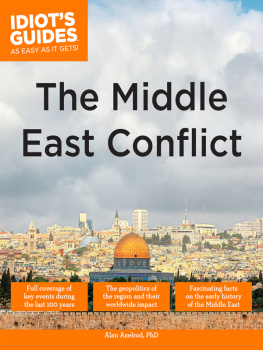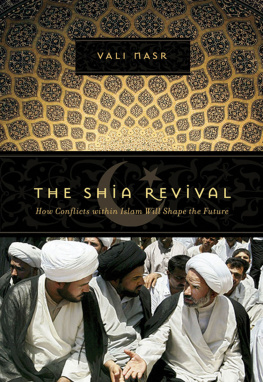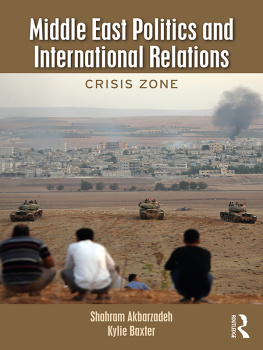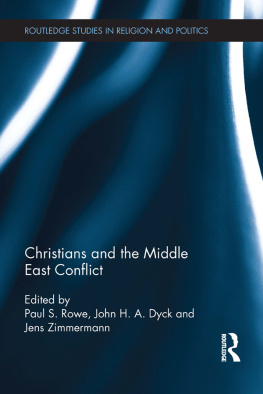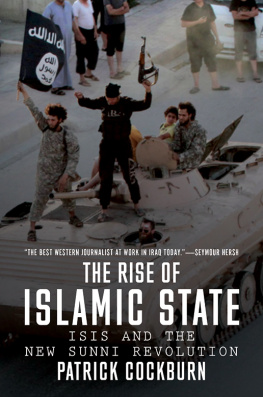Understanding the Middle East
History, Religion, and the Clash of Cultures
Edward Trimnell
Understanding the Middle East
History, Religion, and the Clash of Cultures
Beechmont Crest Publishing
Cincinnati, Ohio
www.beechmontcrest.com
0-9748330-6-1
Contents
Introduction 4
Chronology of Major Events 8
Chapter 1: The Ancient Middle East 11
Chapter 2: The Birth and Rise of Islam 32
Chapter 3: Understanding the Crusades 45
Chapter 4: The Basics of Islam 75
Chapter 5: A Millennium of Change in the Middle East 106
Chapter 6: Zionism and the Modern State of Israel 121
Chapter 7: Iranthe Islamic Republic 163
Chapter 8: The Story of Saudi Arabia 199
Chapter 9: Iraq Before Saddam Hussein 225
Chapter 10: Saddam Husseins Iraq 268
Chapter 11: Islamic Fundamentalism and Global Terror 324
Chapter 12: Beyond the Middle East: the Clash of Cultures 375
Selected Bibliography 397
Introduction
Since September 11, 2001, the English-speaking world has become intensely interested in the Middle East. However, a cursory glance at the headlines always seems to produce more questions than answers: Where did Islamic militancy come from? How did Saddam Hussein rise to power in Iraq? Why do the Israelis and the Palestinians hate each other so much? This book seeks to answer these questions.
Very few readers will be able to remember a time when the troubles in the Middle East did not appear frequently in headlines. Even before the post-9/11 wars in Iraq and Afghanistan, there were other conflicts. Most readers will recall the Persian Gulf War of 1990-91 and the Wests subsequent confrontations with Saddam Hussein. A slightly smaller number will remember the Iran-Iraq War that produced so much destruction throughout the 1980s, and the Iran hostage crisis of 1979-1980.
Before that there were the oil crises of the 1970s, the Yom Kippur War, the Six Day War, the Suez Crisis, and the 1948 Arab-Israeli War. All the while, there were violent coups in Iraq, pathetic power struggles and intrigues within the Saudi royal family, and ideological battles between Islamic militants and moderate Muslims. And all this occurred just since World War II.
A complete and exhaustive history of the Middle East could easily occupy enough space for ten or a dozen books. The story of the Middle East begins around 3100 B.C., and includes a vast array of civilizations, rulers, religions, and prophets. Any of the topics included in this volume could be expanded into a separate book. My objective here was to present the aspects of the regions history that will most interest Western, English-speaking readers. This means a focus on the conflicts that have dominated recent headlines: Islamic terrorism, the wars of Saddam Husseins Iraq, and the Palestinian intifadas. We will also look at some older conflicts: Europes wars with the Ottoman Turks, the Crusades, and the conquests of the first Muslim empires.
Books about the Middle East tend to fall into two broad categories. First, there are the books that present only the facts with no analysis. These books often leave the reader with lots of names and dates, but no real conclusions. Then there are the books that begin with an axe to grind, and present only the facts that support a particular thesis. These books leave the reader either indignant or self-satisfied (depending on his or her political persuasion), but with an incomplete grasp of complex issues.
I have chosen a middle ground in this regard. Understanding the Middle East is primarily an informational text. However, I have not hesitated to draw some conclusions where conclusions seemed warranted. Nevertheless, I have tried in all cases to present enough facts to allow the reader to draw conclusions of his or her own.
Conventions used in this book
Dates: When discussing specific dates in antiquity, I have used the abbreviations B.C. and A.D. rather than B.C.E. and C.E.
B.C. and A.D. have a close connection with Christianity and Western civilization, whereas B.C.E. and C.E. are considered more culturally neutral. I use the former set of date abbreviations not for religious or ideological reasons, but because these are the abbreviations that will be most familiar to the largest number of readers.
Transliterations: This book includes many Arabic personal names and terms. Authentic Arabic is written not with the Latin alphabet, but in Arabic script. Furthermore, there are many Arabic sounds that have no exact equivalent in our system of phonetics. Transliterated (Latinized) Arabic terms are often mere approximations. Their spellings do not accurately reflect the sounds that a native Arabic-speaker would make when pronouncing them.
Perhaps because of this need to approximate, there is considerable variation in the transliteration of Arabic terms that appear frequently in the media. For the sake of standardization, I made certain choices in this area and stuck with them throughout the book.
When discussing the Muslim holy book, I use the traditional transliterated term Koran . Alternatives include Quran and Quran . (The last one seems to be the most current.) Koran was the version most frequently used prior to the recent surge of interest in the Middle East.
To denote the minority branch of Islam, I use Shiite . More recent transliterations include Shia , Shia , and Shiite . They all refer to the same thing.
For transliterations as for dates, I chose the older words in order to prevent confusion among readers who may be less familiar with the newer terminology.
How this book is organized
Chapter 1: The Ancient Middle East: There were civilizations in the Middle East long before the current conflicts between Judaism, Islam, and Christianity. Chapter 1 describes the ancient Middle East, from the first rise of civilization, to Roman control over the area. In this chapter you will meet the ancient Sumerians, the Babylonians, the Persians, the Assyrians, and others. This chapter also includes the story of the ancient Hebrews.
Chapter 2: The Birth and Rise of Islam: Around 610 A.D., a prophet named Mohammed began to experience a series of revelations. Within a few decades, the religion he foundedIslamdominated the Arabian Peninsula. Within a hundred years of Mohammeds death, Islam had become a major religious and political force in the Middle East. Chapter 2 explores the origins of Islam, and its early years of expansion.
Chapter 3: Understanding the Crusades: This chapter discusses the Crusades. Although the last Crusades ended more than seven hundred years ago, these wars of the Middle Ages suddenly became a topic of conversation in the months following 9/11.
Chapter 4: The Basics of Islam: Islam is definitely one of the topics that could be expanded into a separate book. This chapter gives the reader the basics.
Chapter 5: A Millennium of Change in the Middle East: Chapter 5 examines the Christian Reconquest of Muslim Spain, the Mongol invasions, the Ottoman Empire, and how the twentieth centurys two World Wars changed the Middle East.
Chapter 6: Zionism and the Modern State of Israel: This chapter begins with a look at Palestine after the Roman era. Next there is a brief history of the European Zionist movement, and early Jewish migrations to Palestine. The chapter covers the establishment of the State of Israel, and the wars between the Jewish state and its Arab neighbors. The Israeli-Palestinian conflicts are also covered.
Chapter 7: Iran: the Islamic Republic: Chapter 7 explains some basic characteristics of Iran, and how Iran differs from its Arab neighbors. Foreign powers have often intervened in Irans internal politics. This chapter details Irans past relationships with Great Britain, Russia, and the United States. Much of Chapter 7 is devoted to the Islamic Revolution of 1979 and the Iran hostage crisis. There is also a brief summary of President Khatamis years in office, and an introduction to President Mahmoud Ahmadinejad.
Next page

